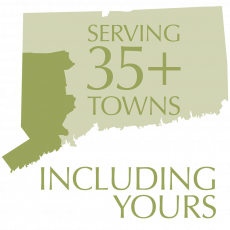“I hear about Food Prep Sundays and see people’s food prep photos on social media. Is food prep really what I need to do to reach my weight and nutrition goals?”
The short answer is “yes.” Advance food prep is an important tool to have when it comes to meeting your health and weight management goals. Why? As we’ve discussed before, planning ahead is an important part of any goal you’re trying to meet or habit you want to develop – whether it’s exercising more, sleeping better, or eating healthier. The philosophy behind Food Prep Sunday is to invest a few hours on a Sunday (or whatever day works for you) to prepare healthy meals in advance and set yourself up for a successful, low-stress week. By preparing meals for the week ahead, you’re less likely to succumb to quick, unhealthy choices or take-out at the end of a hectic day.
An added benefit of this lifestyle shift is that it can significantly reduce the amount of food that gets wasted. This issue has become so pervasive in the US that the Academy of Nutrition and Dietetics (eatright.org) is addressing it as part of National Nutrition Month in March. Under the theme Go Farther with Food, the organization hopes to encourage people to plan ahead, not only for the sake of their nutrition goals, but also for the sake of cutting back on waste. Reducing the amount of food we all throw away saves money and cuts back on the amount of food that ends up in landfills. Here are some tips to help get you started.
Have a Game Plan
The first step is to plan your menu for the week. Consider keeping a “playbook” of your go-to recipes and rotate through them. Keep them simple, especially to start, and choose recipes that have some ingredients in common to save time and waste. A good example of this is prepping lettuce for salads. Instead of cutting up one romaine heart, prepare the whole package so that assembling salads are quick and easy. Cut up bell peppers into strips to add to salads, use in stir-frys or enjoy as a snack. Meal Prep Sunday can include completing the recipe from start to finish and refrigerate/freeze until you’re ready to eat it, or simply prep the ingredients – chop, marinate, etc., — so cooking the dish is easier later on. (Just make sure to follow proper safe food handling procedures, particularly when it comes to raw poultry or meat.)
The A-List
Once you have your plan, make a grocery list of all the items you need. And — here’s the tricky part – stick to it. Challenge yourself to buy what you need to make your meal plan a success, without being tempted by the things that aren’t part of the plan.
Shop Your Season
Choose fruits and veggies that are in season – they’re cheaper. Also, shop local if you can. Buying produce from a farmer’s market or local food stand means the food was picked recently and didn’t have to travel far to get to your table. The benefit? It stays fresher longer, so you’re less likely to throw it away before you have a chance to eat it.
Stock Up, but Don’t Overstock
We all know the expression “out of sight, out of mind.” The same holds true for food, so keep your fridge and pantry clutter free. Buy only what you really need for the week, and try to use up most of what you have before you venture out on your next shopping trip. If your fridge is overfull, you might not even realize what’s in there until it’s too late– what a waste!
Cook Once, Eat Twice
While you’re at it, consider doubling or tripling a recipe and freezing the leftovers in individual portions for those nights when you’re short on time.
Make Friends with Your Freezer
We all know the freezer is a great way to store leftovers so you can reheat them for another meal down the road. But there’s so much more it can do for you. Got berries or veggies you can’t use up? Catch them before they go bad – wash, dry, and toss them in a freezer bag to use in smoothies or other recipes such as muffins or sauces.
Oh, and BY the Way…
Sell by, best by, use by? If you’re confused, you’re not alone. Deciphering the real meaning behind these guidelines can mean the difference between throwing away something prematurely and getting the most out of what you buy. Here’s a quick tutorial: Sell by is a note to the grocer as to when the item should come off the shelf if not sold – so if it’s past the “sell by” date, you should pass by it in the store; best by refers to the time period when the food is at its best in terms of flavor, though you can still consume it after that date; use by means the food should be eaten by that date. Still confused? When in doubt, throw it out. As much as we want to save money and reduce waste, it’s not worth the price of getting sick!
Planning ahead in the grocery store and your kitchen is good for your waistline, great for your family’s budget, and even better for the environment. It’s a win-win (win). Good luck on your food prep adventure! If you need help getting started on your nutritional journey, feel free to contact me for a private consultation at 203-438-5555.


